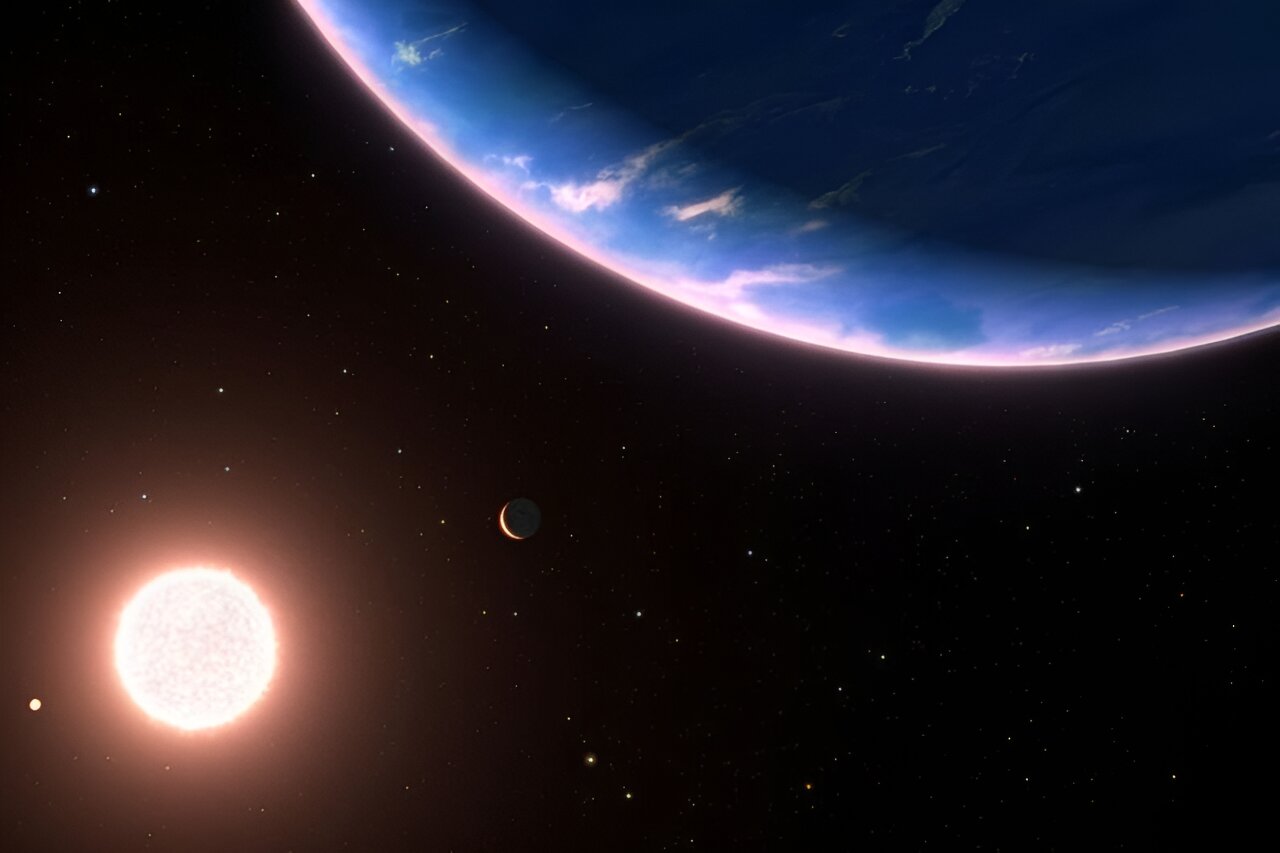Scientists used the James Webb Space Telescope to study the exoplanet GJ 9827 d, located in the constellation Pisces. They have concluded that this super-Earth has an atmosphere saturated with water vapor.

“Steam World”
A Canadian-led international study using the James Webb Space Telescope has provided new data on the atmosphere of GJ 9827 d, an exoplanet orbiting the star GJ 9827 in the constellation Pisces, about 98 light-years away from Earth.
The study reveals that the planet’s atmosphere contains a high concentration of heavy molecules, including a significant amount of water vapor, causing astronomers to believe that it may well be a “steam world”.
At the beginning of this year, using data from the Hubble Space Telescope, IREx researchers reported that they had detected water in the atmosphere of GJ 9827 d, making it the smallest exoplanet with a confirmed atmosphere about twice the size of Earth.
Together, these important findings open new ways to search for life outside our Solar System and deepen our understanding of the formation and composition of planets.
Still an unattainable goal
Over the years, scientists have focused on detecting atmospheres on large gas giants and mini-Neptunes — planets much larger than Earth, similar to Jupiter and Neptune, whose atmospheres are dominated by hydrogen.
But so far, detecting atmospheres around smaller planets closer to Earth has remained an elusive goal. “For now, all the planets we’ve detected that have atmospheres are giant planets, or at best mini-Neptunes,” said lead study author Piaulet-Ghorayeb.
“These planets have atmospheres made up mostly of hydrogen, making them more similar to gas giants in the solar system than to terrestrial planets like Earth, which have atmospheres dominated by heavier elements.”
Atmosphere rich in heavy molecules
What makes GJ 9827 d different is the composition of its atmosphere. Combining JWST/NIRISS and HST data, Piaulet-Ghorayeb showed that the atmosphere of GJ 9827 d is rich in heavier molecules, with a quite large amount of water vapor, unlike the hydrogen-dominated atmospheres of the larger planets.
This discovery marks the first reliable detection of an exoplanet atmosphere in which hydrogen is not the dominant component, indicating a heavier, water-rich atmosphere.
Piaulet-Ghorayeb and her team made their observations using a Canadian instrument on JWST, the Near-Infrared Imager and Slitless Spectrograph (NIRISS). Using transmission spectroscopy, they analysed the starlight passing through the planet’s atmosphere as it transited (passed in front of) its host star, GJ 9827.
Next, they combined the new JWST observations with preliminary HST observations to provide strong evidence that the observed spectral features are caused by the planet’s atmosphere and not by contamination from the system’s star.
Thanks to the JWST/NIRISS SOSS data, scientists can finally distinguish between two types of planetary atmospheres: one is cloudy with few heavy elements, mostly hydrogen, and water is present only in small amounts; the other is high-density with lots of heavy elements and lots of water.
Since GJ 9827 d is close to its star, its atmosphere is probably a mixture of gas and superheated dense state, rather than having distinct layers or clouds.
Significant step forward in research
Although GJ 9827 d is not considered suitable for life due to its proximity to the parent star and consequent high surface temperatures (around 350°C), this discovery is a considerable step forward in the search for suitable environments for life.
The presence of a heavy, water-rich atmosphere on a small planet like GJ 9827 d supports the concept that such atmospheres exist and can be studied with James Webb accuracy. Which makes the prospect of finding Earth-like planets suitable for life more realistic.
GJ 9827 d is the first planet where we have detected an atmosphere rich in heavy molecules, similar to terrestrial planets in the Solar System. And the first confirmed example in a long time of the “steam world” that the scientific community has been talking about.
Astronomers hope that further planned JWST observations of GJ 9827 d over the next few months may shed more light on the components of its vapor atmosphere.
According to phys.org


